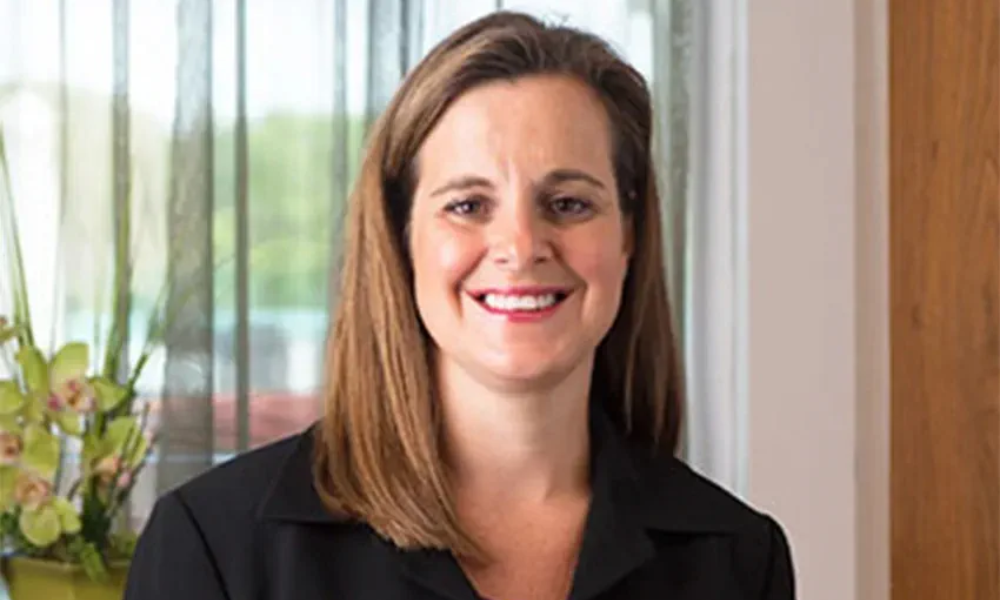
SECURE 2.0 Act lets employers help debt-saddled workers prepare for their future

More than 40 million Americans are holding their breath as the U.S. Supreme Court has begun hearings over President Joe Biden’s student loan forgiveness plan.
If approved, up to $20,000 in student loan debt will be canceled, eliminating the full remaining balance for roughly 20 million borrowers, according to the Biden administration.
However, regardless of the high court’s ruling, employers will soon have a new way to assist employees struggling with student loan debt.
Starting in January 2024, companies will be able to make matching contributions to sponsored retirement plans based on student loan payments under a provision in the SECURE 2.0 Act, which was signed into law at the end of 2022.
“Employees have been saying student loan debt is so overburdensome that they aren’t contributing to retirement, participating in other financial wellness initiatives and buying homes,” Stacey MacPhetres, senior director of education finance at Bright Horizons EdAssist Solutions, told HRD. “This provision allows employers to jumpstart retirement planning for individuals otherwise burned by student loans.”
The provision permits an employer to make matching contributions under a 401(k) plan, 403(b) plan or SIMPLE IRA with respect to “qualified student loan payments,” which is defined by the IRS as a loan you took out solely to pay qualified higher education expenses that were:
Tuition, required student activity fees, books or anything that is required to enroll in or attend school are considered qualified expenses. The IRS is expected to issue guidance and regulations in the coming months for HR leaders interested in taking advantage of the provision.
“When you think about employer-sponsored student loan repayment, that’s a very significant budget item,” says MacPhetres, who previously spent 13 years as vice president at JPMorgan Chase. “It’s something companies have to plan for and then ramp up. But retirement is probably something already built into their benefits package. So, this is a way for employers to enter the student loan space and give some assistance to employees without having to restructure benefits programs.”
Even if the Supreme Court rules in favor of the Biden administration, millions of borrowers, including those with private student loans, still won’t receive full debt relief.
And, after a three-year pause on student loan payments due to the COVID-19 pandemic, they’ll resume 60 days after either the Supreme Court’s decision or June 30. That means payments could pick back up again as early as May.
“This is a critically important issue for so many current and potential employees,” MacPhetres says. “A student loan benefit is something that’s going to be expected going forward. Employers have to recognize that if they want to recruit and retain an educated workforce they’ll have to participate in this space.”
More than half of employees (57%) believe their employers should play a role in helping them pay down their student debt, whether that’s via direct financial support or offering digital tools or advisors to help guide them through the process, according to a Betterment at Work survey.
Through 2025, employers can continue to make contributions of up to $5,250 per employee annually toward eligible education expenses without raising the employee's gross taxable income under Section 127 of the Internal Revenue Code. California companies offering tuition reimbursement to employees include Apple, Chipotle, Wells Fargo, The Walt Disney Company, Gap, Taco Bell and more.
In November, a federal appeals court issued a nationwide injunction after six states filed a lawsuit that the federal student loan forgiveness program not only threatens their future tax revenues, but also requires approval by Congress.
Initially, a federal judge rejected the challenge brought by Nebraska, Missouri, Arkansas, Iowa, Kansas and South Carolina, saying that while they raised “important and significant challenges to the debt relief plan,” they ultimately lacked legal standing.
However, the appeals court said that Missouri had shown a likely injury from the program: the Missouri Higher Education Loan Authority (MOHELA), a major loan servicer, would lose revenue under the plan and Missouri’s state treasury department receives money from MOHELA. The Biden administration had stopped accepting applications for relief a week before after a federal district judge in Texas blocked the plan.
Under the Biden administration, more than $31 billion in student loan relief has already been issued for hundreds of thousands of borrowers, The Hill reported. However, the forgiveness has only applied to borrowers with disabilities, those participating in the Public Service Loan Forgiveness (PSLF) program and those who have attended schools that misled students.
The country’s outstanding student loan debt balance exceeds $1.6 trillion, according to the Biden administration.